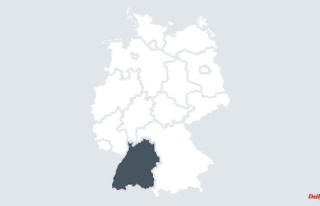What do electric blankets, fan heaters, infrared heating, air conditioning and radiators have in common? That's right, they don't run on gas and can still provide cozy warmth. Warentest has examined whether such electrically powered devices are actually suitable for escaping the expensive price of gas.
In view of the immensely high gas prices, quite a few people are looking for electricity-powered heating alternatives to relieve their wallets without having to forego a warm home. Because every second German household heats with gas. That's a good 20 million homes. And that could be expensive. And when things go really badly, there are times when there is no gas at all.
Stiftung Warentest has addressed the changing needs of households and looked at both the costs and the usefulness of operating five types of electric heaters. As there would be: electric blanket, fan heater, infrared heating, air conditioning and convector or radiator.
Result: With electricity costs of 50 to 500 euros with regular daily use during the cold season, the differences are enormous. The costs for a running time of 4 hours at 2000 watts of heating power over six months at an electricity price of 34 cents per kilowatt hour were calculated. Warentest assumed a cool 16 degrees living room (30 square meters, 2.50 meters high) in an average insulated house, which should be heated up to 20 degrees.
The comparison shows: The electric blanket is the most economical. Of course, it only warms the person and not the whole room. A two-person household gets through the cold season with heating electricity costs of 50 euros.
Fan heaters, on the other hand, seem to be a simple and inexpensive solution for warming up the entire living room. That's what the more than 650,000 people who bought a fan heater as an alternative source of heat this year thought, mostly for well under 100 euros. The problem: They consume a lot of electricity, around 2000 watts. Over the winter, that quickly adds up to a few hundred euros. And if only every second gas household uses such an electric backup heater, this can lead to failures in the power grid. Apart from that, care should be taken with the fan heater. Because it can overheat in continuous operation and is therefore only suitable for short periods of use. So better let it be.
Convectors or radiators are also not suitable for continuous operation, even if they are also cheap (about 50 euros) and at least there are no safety concerns. But at 0.70 euros per hour for electricity (2000 watts), the devices are simply too expensive for frequent and long-term use.
An infrared heater is available for over 100 euros. At 1000 watts, it costs only 0.34 euros per hour. However, a radiator only provides a third to half the heat output of a radiator. It is especially effective when a person is illuminated directly. Two devices may be necessary for two people. But then twice as much operating costs are due and the acquisition costs have to be covered twice.
It looks better in terms of power consumption with an air conditioner. Here the electricity costs are manageable at 0.20 euros per hour. If you don't have one yet, you have to reckon with acquisition costs of 1000 to 2000 euros. Then there are the installation costs of around 1300 euros. The system must also be serviced regularly.
In any case, you should refrain from using irons, hair dryers, open ovens, electric grills and hotplates as a substitute for heating. The devices all heat and do not need more electricity per heat output than a radiant heater or radiator. However, using it as a heat source is dangerous. Either because there is a risk of hot surfaces or the device is not designed for continuous operation for several hours. The operation of gas patio heaters or camping gas cookers indoors should also be avoided as a matter of urgency. They work with gas cylinders under high pressure and are neither permitted nor suitable for heating rooms.
It remains to be said that there will be enough gas for everyone this winter if consumption falls by around 20 percent compared to the average of the last four years. It is therefore important to hope for the best and, above all, to save energy where possible.












